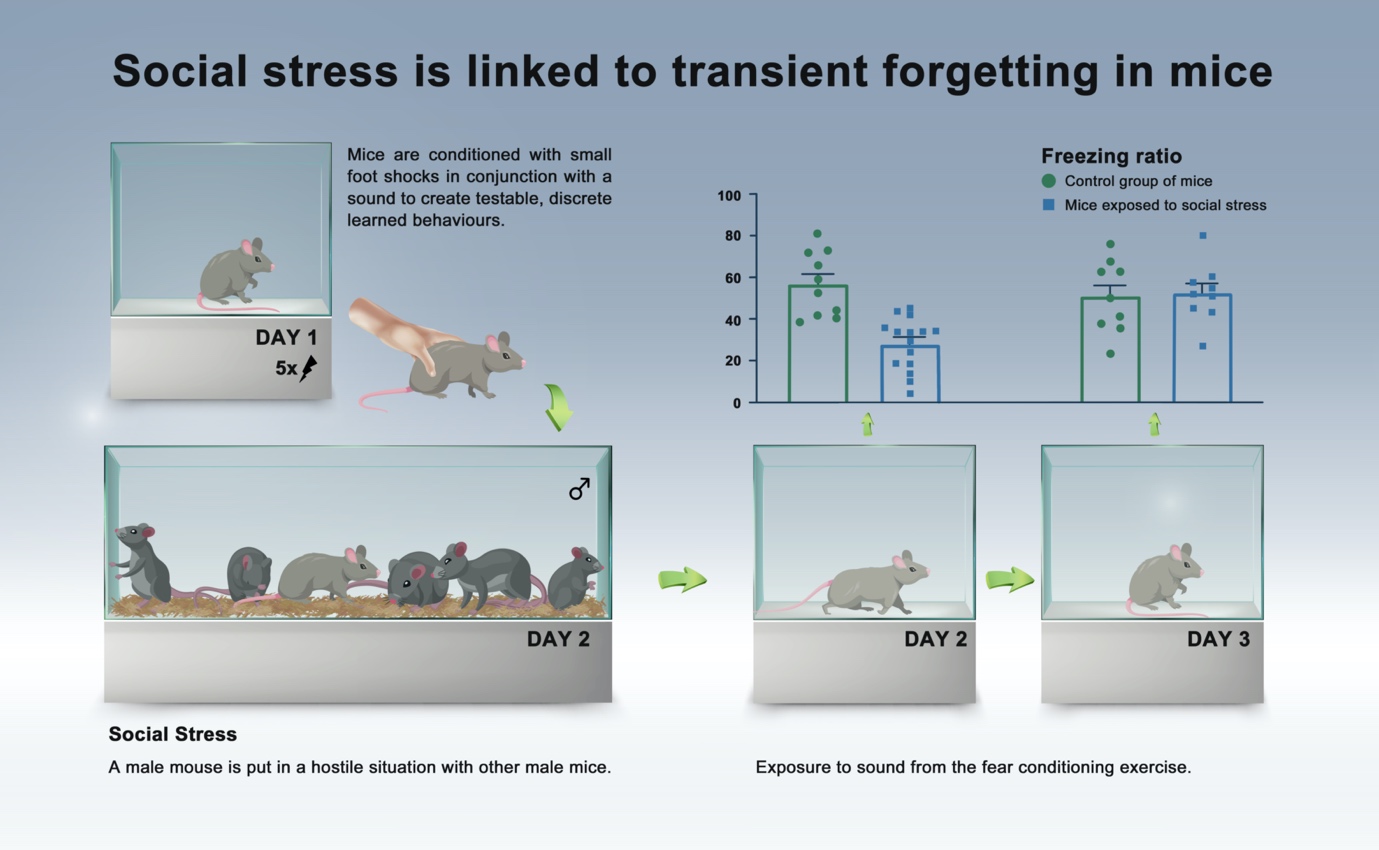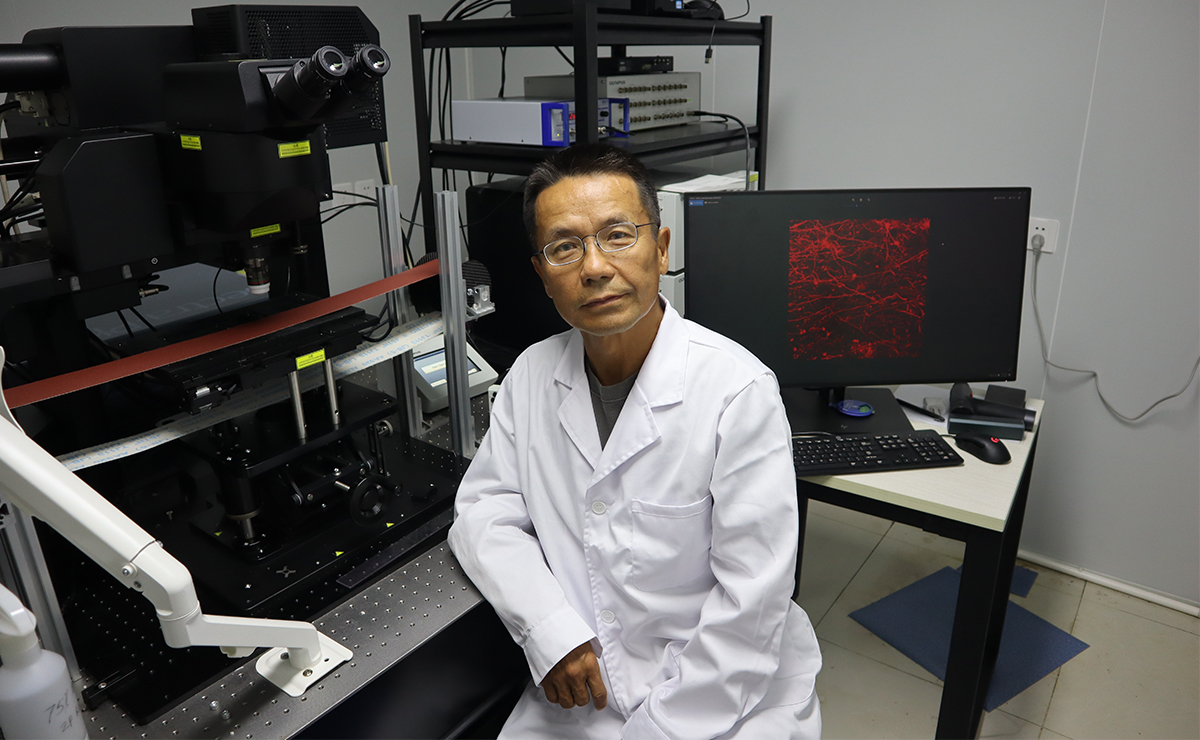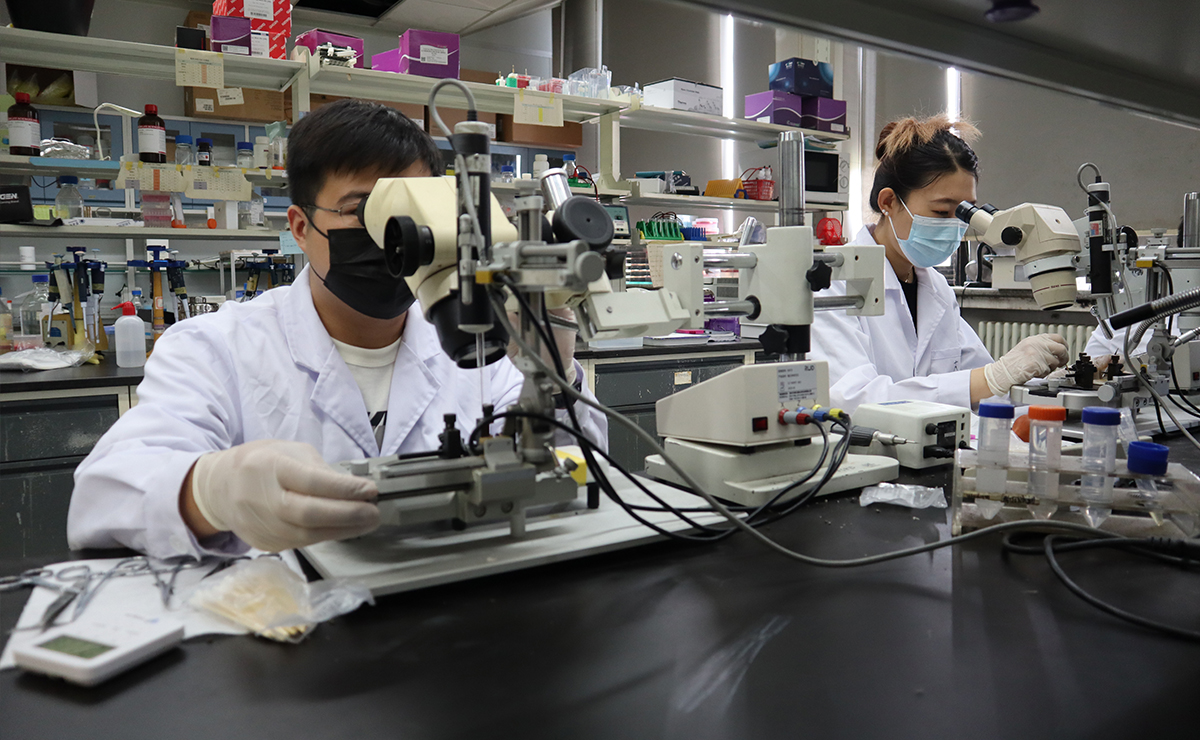Recent findings show that negative or positive social environments stimulate a protein that temporarily makes some memories harder or easier to access.
“It is curious how sometimes the memory of death lives on for so much longer than the memory of the life,” wrote Arundhati Roy in her Booker Prize winning novel, The God of Small Things. Why some of our recollections remain close to the surface, while others are buried deeper, also intrigues researcher, Yi Zhong.
“The ability to flexibly remember and forget are both important for our mental health,” Zhong points out. Post-traumatic stress disorder (PTSD), for example, is linked to an inability to silence traumatic memories. Understanding on a molecular level how the brain activates memories might bring new treatment options into play, Zhong notes. A recent mouse study by his group has even suggested that brain-administered drugs or proteins might be able to help tweak this process.
This latest work, done at Tsinghua’s School of Life Sciences, focussed on how social stress or reward might affect the brain’s internal filing system. Specifically, Zhong looked at what neuroscientists call memory states.
The most easily recalled memories are those in a latent state: for example, the names of the vegetables you need to buy for dinner tonight. More deeply buried are silent state memories – the recollection of a particular meal as a child, perhaps – which the brain usually only converts to more accessible latent state memories after an external cue, such as a smell.
Humans and other animals evolved this storage system to cope with the world’s complexity, says Zhong. “Remembering everything is not a good strategy for an animal living in an ever-changing environment,” he points out. It would be overwhelming to process lots of memories all the time, he explains, and, not all experiences from the past are useful lessons for the present moment. “The ability to switch the states of memory is how animals achieve flexible and dynamic behaviours,” he explains.

A difference in the freeze responses between mice exposed to social stress and control mice suggest that social stress causes a disruption in recent memories.
Stress-head
Researchers think different memory states are the result of the number and strength of the connections between the synapses of adjoining bundles of brain cells – called engrams. Stronger connections tend to mean the memory is more easily accessed – a latent state – while damaging the connections might switch a memory to a silent state. Thus, many memory studies look at how the brain makes and breaks these synaptic connections.
In Zhong’s recent mouse study, published in PNAS in April 20221, the effect of social stress and reward in reinforcing or silencing older memories was explored.
Initially the group used fear conditioning – small foot shocks in conjunction with a context, such as distinct smell, sound, and floor texture to create testable, discrete learned behaviours in the mice. After this, social reward was invoked in some of the mice by allowing a male mouse to mix with females, and stress, by temporarily putting an animal in a hostile situation with other males.
After the mice were exposed to social stress or reward, Zhong’s team were able to identify significantly different recall levels of fear conditioned memory between the mouse groups by observing freeze responses linked to the context from the conditioning exercise. They also used virus-delivered, fluorescent protein to identify and track indications of changes in the silent and latent states of the engrams linked to the fear memories.
The results suggest that the sensation of reward felt by the male mice mixing with the females helped the males convert memories from a silent to a latent state. And, vice versa, social stress encouraged latent state memories to switch to the silent state, which the researchers described as “transient forgetting” as it didn’t show up 48-hours after the exposure to stress.
To investigate the underlying mechanism, Zhong and his colleagues looked at activity in the mouse hippocampus, a part of the brain strongly associated with memory. Specifically, they looked at the activity levels of a protein called Rac1, which is believed to play a role in helping to organise connections between brain cell synapses. “Rac1 is known to be involved in the forgetting of memories through regulating synaptic structures,” explains Zhong.
Their experiments showed that social reward suppressed the protein, while social stress increased its activity. “Hippocampal Rac1 activity is definitely sensitive to emotional stimuli,” says Zhong.
Given their earlier observations the scientists concluded that lower levels of protein activity might be involved in helping the animals retrieve memories, switching silent state memories to the latent state. And the reverse might be true.
The group then bolstered their hypothesis via a number of routes, explains Zhong. They showed that low Rac1 activity levels do rescue memories. The group tested this by artificially silencing engrams and observing, after the injection of Rac1 inhibitors, silenced engram memory recall in memory tests. Another showed a Rac1 inhibitor prevented the social stress-induced memory disruption observed in a non-Rac1 inhibited group of mice.
“We believe Rac1 in the hippocampus is a connector between the emotion system and memory system, linking the emotional state and memory state,” Zhong concludes.

Yi Zhong is a professor at the School of Life Sciences at Tsinghua University.
Antibiotic boost
The discovery of this possible connection offers an opportunity, says Zhong. Researchers could manipulate activity levels of Rac1 as an indirect way to trigger deliberate switches in memory state.
In mice, Zhong’s group looked at how raising hippocampal RAC1 activity via injections of an antibiotic called anisomycin, which inhibits protein synthesis, converts latent memories to the silent state. In doing so it recreated the effects of social stress.
Injection of the RAC1 inhibitor ‘Ehop016’, had the opposite effect and encouraged state switching from silent to latent memories. This recreated the effects of social reward.
In theory, such interventions to stimulate memory state switching, in either direction, could help address some of the difficulties seen in people with PTSD. But they could also address the memory difficulties experienced by those with autism spectrum disorders and Alzheimer’s disease too, says Zhong.
“The abnormal switching of memory states may contribute to many neural disorders,” he says.
Episodic memory, the memory of everyday events able to be explicitly recalled, seems to be unduly silenced in Alzheimer’s disease patients, he points out. And in 2016, the team showed that flies with five autism susceptibility gene mutations were unable to forget previously formed memories via the activation of the RAC1 gene. This suggests, says Zhong, that people with autism could be showing lower memory flexibility because they find it harder than other people to silence an original memory.
Work in people is more challenging because some of the techniques used to manipulate Rac1 and monitor the effects in mice at a molecular level are not suitable for human studies. Injecting and expressing fluorescent proteins requires access to the brain through the skull. As a result, most memory research in people is much less detailed. Researchers have found psychological stress can decline the accessibility of episodic memory, but have been limited in their ability to observe the molecular processes.
Still, Zhong says there is some encouraging evidence that many of the findings on memory state switching in animals can be applied to people. “Our recent work revealed that the hippocampal Rac1 activity in Alzheimer’s disease patients is significantly elevated, which is consistent with our finding of the relationship between memory states and Rac1 activity,” he says.
“This work indicates that our findings in the animal studies are also relevant for humans. But direct evidence is still required from further investigations.”

Yi Zhong’s team at Tsinghua’s School of Life Sciences study the neural mechanisms of learning and memory using genetics, electrophysiology, behavior and imaging.
References
1. Lei, B., Lv, L., Hu, S., Tang, Y. & Zhong, Y. Social experiences switch states of memory engrams through regulating hippocampal Rac1 activity PNAS 119 (15), e2116844119 (2022) Doi: 10.1073/pnas.2116844119
2. Dong, T., He, J., Wang, S., Wang, L., Cheng, Y. et al. Inability to activate Rac1-dependent forgetting contributes to behavioral inflexibility in mutants of multiple autism-risk genes PNAS 113 (27), 7644-7649 (2016)
Editor: Guo Lili